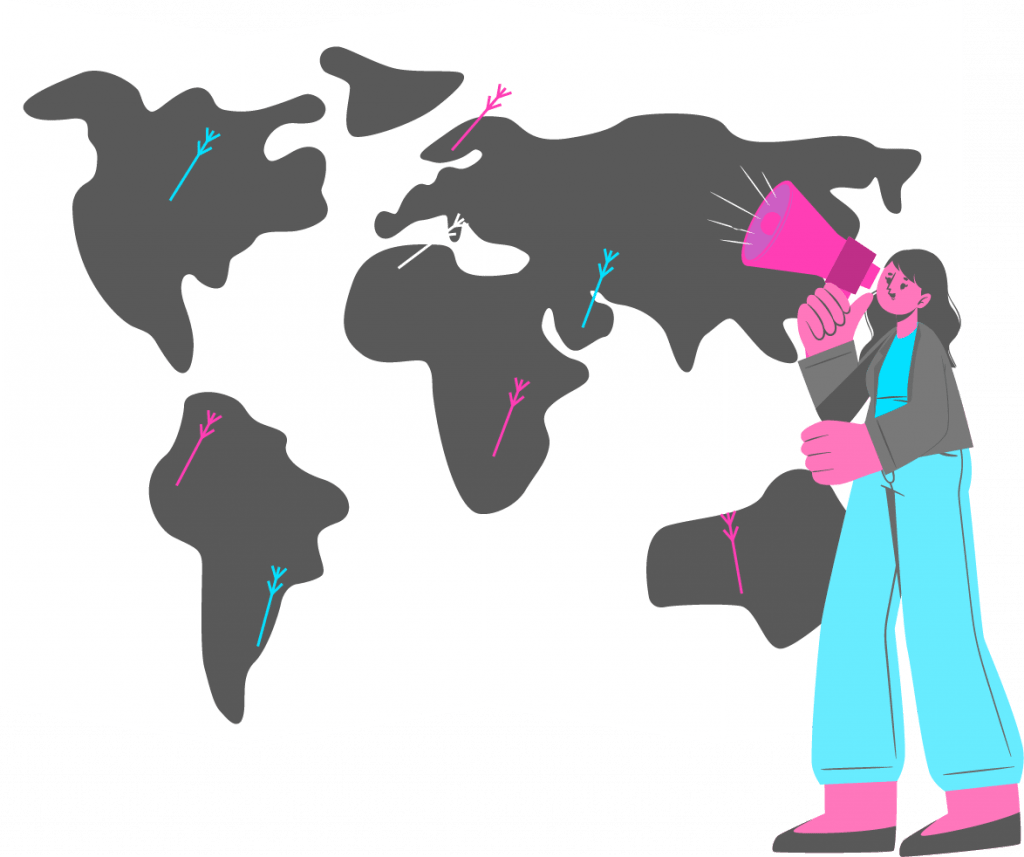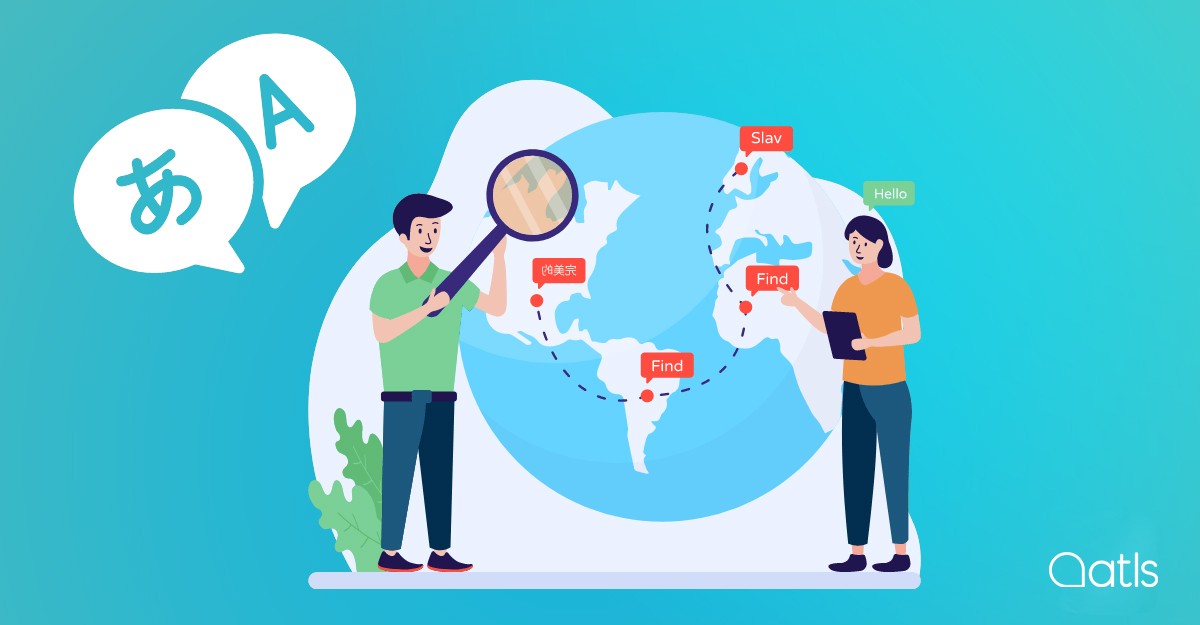How to boost your ROI with transcreation

ROI enables you to measure the financial performance of your brand based on the investment you make (in marketing above all). If you want to target international markets, transcreation is one of your key commercial tasks, working on brand image and—of course—your advertising content.
Contents
What do you need to succeed in other markets? What makes brands thrive in some parts of the world, and not in others? It isn't about the marketing budget, it's about ROI; and it's not just a question of translation, but also (and perhaps, above all) transcreation.
For any company or business, having an attractive brand image, competitive catalog of products and services and a solid marketing plan is fundamental; but things can be very different when you make your debut on the international stage. How can you adapt to the cultural context, whilst remaining true to who you are as a brand?
But let's not get too philosophical. You're probably more interested in improving your business' return on investment in foreign markets, and that means having a well-designed, effectively implemented international marketing strategy. It might not seem so at first, but cultural context and financial performance are very much linked. And transcreation is the point where both elements converge.
What is transcreation, and what's it to do with ROI?
Let's start with a brief reminder of what transcreation actually is (and we've explained it before in our blog if you want to take a look). At the halfway point between localization and copywriting, this translation specialism encompasses two differential elements:
- Creativity comes first. In this case, transmitting the meaning from one language to another is secondary to creativity; reproducing concepts, emotions and actions in another language, culture and market.
- Marketing is at the centre. Transcreation has a clear vocation: advertising, promotional and commercial; you can use it in other areas, but the focus will generally be on conversions and sales.
And maybe it's a good idea to clarify all this before we go any further. What is return on investment in marketing? ROI - just three letters, but incredibly important ones for companies. Return on investment (or ROI) is simply the financial relationship between the investment you make and the profit it yields; in short, the return on investment.
You've seen the raw ingredients, now let's cook up a marketing storm...
- You want your digital business to reach markets and potential customers, and the more, the better.
- Given that this takes a financial push from you, you must want to be sure it will pay off in terms of profits.
- These up-and-coming markets speak other languages, but it's more than that; the cultural habits, communication patterns and regulatory standards are different.
- If you want to make an impressive impact in these markets, you have no choice but to adapt your message, image and even your product.
So, what do you think... are transcreation and ROI linked, or not?
How does content translation affect return on investment in marketing?
We've touched on metrics. As is generally the case in a field as cross-cutting, omnipresent and intangible as translation, it's very difficult to independently measure the ROI generated by transcreation. This measurement is usually indirect, and is carried out under the umbrella of more specific, inextricably linked marketing actions.
But whilst it's impossible to isolate and measure it, intuitively, you need only look at the polar opposite to understand the impact of transcreation (and translation in general); try not doing it, and imagine what results you would get. As such, though putting it into exact figures can be challenging, the return on investment in marketing largely depends on getting the transcreation right.
It's more than that. We would go so far as to say that many international commercial failures have a lot to do with a poor translation (because let's not forget all those famous cases of linguistic and cultural mishaps). Or, rather, the absolute lack of localization and transcreation in these marketing projects.
Transcreation helps to increase your company's ROI, but how?
Whichever international marketing strategies you implement in a campaign or specific action, you need to pull out all the stops if you want to make a significant return on investment. This means harnessing all the resources transcreation has to offer. Let's look at the most important ones.
Connect with your target audience
When you hear statements like this, it's common to think about concepts that seem to be very superficial and intangible. And yet, behind it is solid, scientifically proven evidence, and it's worth getting to grips with it: contextual communication models (see a brief run-down here, and a more in-depth explanation here).
With that in mind, you can see that it's not just about translating, or even localizing; and even less so when you have a clear objective (in turn, no simple task); persuading your audience to buy. First of all, you need to understand who you want to target, and know their characteristics.
If you think how much of a challenge it is to connect with a native audience who you're already linked to from the outset, imagine the scenario with other audiences. Who are the Latin American buyer personas for your product or service? What expectations do young Chinese single professionals have? How should you address Soviet baby boomers?
Adapt your marketing content to your target market
Let's put ourselves in the shoes of an English brand that refers to Churchill's famous We Shall Fight on the Beaches speech in its local advertising campaign in the UK. But for a British audience, it automatically conjures up heroic moments and triumphs; but to a Spanish person, it might sound like a beach bar brawl.
In this case it's pretty clear that pure translation, or attempting to localize the content, isn't enough. In a similar vein, transcreators will identify the emotions the brand wants to stir up, and will search for ways to reference the local context, eschewing the original references altogether.
If the concepts, sales pitch and wording you present doesn't attract or chime with your audience, you're fighting a losing battle. Getting support from an expert translator in the target market who specializes in copywriting (in other words, a transcreator), to create effective content.
Know (and adjust your strategy to) your target market's customer journey
The customer journey is the sum of experiences a person (or potential customer type) has with our brand. It goes from their first awareness of our brand to their final decision to buy (and actually beyond, if you consider customer loyalty and brand ambassadors). And (as you've probably already guessed) this journey is different in each market.
An early call to action might well work very well in Germany or the USA, but in markets where impulsivity is lesser-regarded (such as Korea or Japan), it's worth taking a slower approach. Or that seeing intimate hygiene products in a public space in France is OK, but absolutely is not in India.
The attitudes and values triggered in different contexts are just as dissimilar. In some cases, collective good is more powerful than individual decision-making, or instant gratification is less of a motivation than the concept of satisfying needs over the long term. Never underestimate cultural factors.
Adapt your brand image to your target market
Sometimes (in markets very different from the source market), you need to take such a radical approach to the adaptation that it has a profound effect on your brand image. In these cases, transcreators work hand-in-hand with localizers, taking an in-depth look at the branding, conceptualization, slogans, logos, imagery, etc.
As for the form, we all know that certain icons, colours or words can generate very different impacts in different cultural areas. Using the imperative verb form is paradigmatic; some places don't respond well to being 'ordered' to do or buy something, but in others, it's what works best...
But then there's the content. In Switzerland, for example, efficiency, practicality and precision are, traditionally, the default foundations of a brand identity; if you want your brand image to break through that market, you'll need to go in a different direction. Conversely, in Brazil, it's the absolute opposite.
Create specific commercial processes for the target audience in each market
Fancy a vacation on a Black Sea beach this summer? Certain audiences (young single people from Western Europe) might be attracted to the exotic appeal of this holiday, whilst for others (middle class families in Eastern Europe) it's a little treat. And for others (the audience in the country itself) it's about value for money, first and foremost.
If you're approaching a saturated market, the customer experience will be very different to an expanding market; if a specific payment channel is attractive or not, or if having a clear customer service channel is absolutely essential, or merely optional. You need to adapt, and this is where transcreation techniques come in.
As you can see, the added value of your offering varies according to the context (don't forget, you can segment your audience to the nth degree). And you should do the same with your sales pitch. Similarly, meeting expectations, shipping speed or after-sales actions can be secondary in one market, but crucial in another. And you need to know it.
Still don't know how to increase your ROI with transcreation?
Taking into account everything we've been through so far, you'll now realize that if you want to make the leap to other markets, you need to make some serious changes. Often, these adjustments are so radical that, in a sense, you need to go back to the creation process, drawing on linguistic, cultural and psychological criteria.
Ultimately, it's the same aim as always: making your audience feel that your brand, product or service is very much aligned with them. Creating natural, fluent and effective interactions depends, to a large degree, on more than 'speaking their language'. It's about tuning in to the senses. If you manage to do it well, you're going to see an impact on your ROI.
We believe that the best way to optimize your international marketing campaign is to hone in on it holistically. This means tackling different aspects of the campaign (marketing, idiomatic and cultural features) based on sound market knowledge, and having a well-defined strategy from start to finish. To achieve this, partner up with an expert in international marketing, translation and transcreation; it's the most efficient way to get a rewarding ROI.
Transcreate your content, connect with your audience and increase your ROI
In this article, we're unearthing the crucial strategic value of a little-known translation technique, found at the crossroads between marketing and cultural empathy, persuasive writing, and localization. Transcreation can give you that differential value, making your ROI soar.
At ATLS, our digital marketing agency, we have more than twenty years of experience as a translation agency. Which is why we're perfectly in tune with the intricacies of advertising communication that transcend linguistic and cultural boundaries. This makes us your perfect ally for your international expansion.







